Rehabilitation week calls attention to the field of rehabilitation – a field that touches many lives yet is unfamiliar to many until it does. All branches of medicine seek to restore health, but rehabilitation seeks to restore function – that is, the ability to care for oneself, move about, interact with others, and more generally accomplish the life tasks that matter to us. For sudden acute illnesses, like a bout of gastroenteritis, one will likely return to normal function after recovery from the illness.
In contrast, many injuries and chronic illnesses unfortunately don’t result in full recovery (e.g., spinal cord injury, congestive heart failure), and others (e.g., lumbar disk herniation) may resolve physically but leave a person still unable to work or complete their daily activities.
Rehabilitation seeks to maximize function using a much broader set of tools than those that treat or cure the disease. Perhaps most familiar are the physical devices of rehabilitation: wheelchairs and computerized communication devices that let individuals with paralysis or speech problems function by other means. However, rehabilitation has something to offer virtually any condition that results in functional limitation.
Further, the field of rehabilitation can best serve patients by bringing together people with diverse backgrounds and skills to develop innovative treatments and deliver comprehensive care. Moss Rehabilitation Research Institute (MRRI) and MossRehab are home to scientists and clinicians with expertise spanning clinical psychology, neuropsychology, cognitive neuroscience, physiatry, occupational therapy, physical therapy, speech-language pathology, and other disciplines.
Our diverse team and cross-disciplinary approach to rehabilitation research allow us to make important contributions to the field to improve the lives of individuals with neurological disabilities. Below we introduce some of the dedicated individuals involved in rehabilitation research here, and the important roles they play in this large and varied enterprise.
Laurel Buxbaum, PsyD
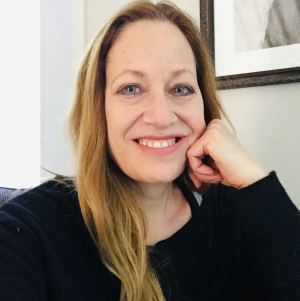
My doctoral training focused on clinical psychology and neuropsychology, so I’ve always been attuned to clinical populations. A particular interest was understanding the underlying causes of the types of unusual behavior explored by neurologist Oliver Sacks, who wrote, “The Man Who Mistook His Wife for a Hat”—that is, patients in whom a specific cognitive or sensory-motor ability is affected by neurological damage, often leaving other abilities remarkably intact. An example is a disorder called limb apraxia, in which individuals with stroke or neurodegenerative disorders have lost the ability to use tools or imitate actions, despite their ability to describe the purpose of the tools, where they are found, and who might use them, despite adequate motor and sensory abilities.
Apraxia is a fine example of a complex disorder whose understanding is enriched by collaboration between researchers from multiple disciplines of scientific study, as well as clinicians: experts in motor control and arm function, language and aphasia, executive function, and memory all contribute different kinds of insights to our understanding.
Moreover, different methods of study, including neuroimaging and behavioral studies with both healthy and clinical populations have proven invaluable. This collaborative work in the Cognition and Action Lab at MRRI has yielded numerous advances in our understanding of how different brain structures contribute to distinct aspects of tool use and imitation tasks, and exactly how these processes may be disrupted by neurological disorders.
When we understand the underlying causes of dysfunction, we are better equipped to design interventions that directly target these deficits to facilitate optimal functioning.
Mary Ferraro, PhD, OTR/L
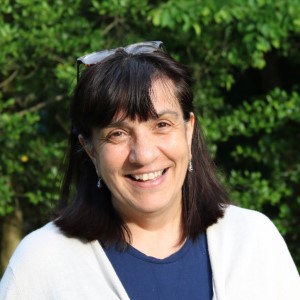
I have worked at MossRehab and the MRRI for over 35 years. Starting as a staff occupational therapist on the inpatient brain injury unit, I was able to take advantage of a research institute that valued working alongside clinicians. This opportunity caused me to examine patient performance and my practice in a more systematic way, leading to numerous research and clinical projects.
One of my current clinical responsibilities includes occupational therapy (OT) staff development, best exemplified by serving as coordinator for the MossRehab OT Fellowship Program in Physical Rehabilitation, an advanced therapy practice training program.
I have other education-related responsibilities for the brain injury center staff and the Moss Traumatic Brain Injury (TBI) Model System. Beyond the continual demand to orient new staff to the needs of individuals with brain injury, my education role seeks to improve day-to-day clinical processes using evidence to inform practice.
Over the past 18 months, Amanda Rabinowitz, PhD, and I have coordinated a knowledge translation project for patients with post-traumatic amnesia, recently published in Brain Injury. The success of the project, changing therapist questions during these patient interactions, hinged on understanding clinic routines, and creating best practices that were workable for all. I saw my role as bringing clinicians and researchers together to improve patient care.
Various research projects over the years enhanced my understanding of rehabilitation’s multidisciplinary scope. By participating in projects on naturalistic action analysis, classification of hemispatial neglect subtypes, and rehabilitation treatment specification, I have had the privilege to work alongside clinicians and researchers who want to understand rehabilitation needs better so that treatments can be enhanced.
John Whyte, MD, PhD
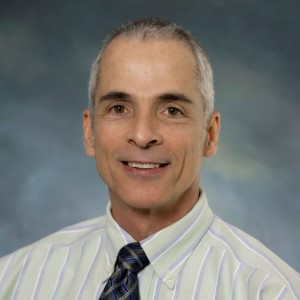
I’m trained as a physiatrist (a physician specializing in Physical Medicine and Rehabilitation) as well as in Cognitive Psychology. I spent the first 10 years of my career working half-time clinically caring for inpatients with severe traumatic brain injury and the other half engaged in research on the cognitive impairments that result from TBI.
Since the beginning of my career, I’ve been interested in the most severe brain injuries – the ones that result in prolonged or even permanent disorders of consciousness (DOC). When I began my career, such patients were systematically excluded from rehabilitation on the premise that their prognosis was hopeless and that they could not actively participate in rehabilitation.
Nevertheless, with some early grant funding, we established a demonstration treatment program, the Responsiveness Program, and showed that rigorous analytic methods could accurately establish a patient’s state of consciousness and track recovery.
Over the years as my research portfolio grew and I was asked to lead MRRI, my responsibilities shifted to focus fully on research, but my research agenda continued to be strongly shaped by my clinical experience and my interactions with clinical colleagues, patients, and families. I’m happy to say that, through my research and studies conducted by a number of collaborators, much has changed for individuals with DOC.
We now have accurate diagnostic tools, improved prognostic abilities, evidence that a substantial minority will have good long-term outcomes, and, most recently, treatments that can accelerate the recovery of consciousness. This has culminated in the publication of a new practice guideline related to DOC that, for the first time, advocates for intensive rehabilitation for this population, based on the evidence developed over the last couple of decades, and a renewed interest at NIH in studying recovery from coma.
Sharon M. Antonucci, PhD, CCC-SLP
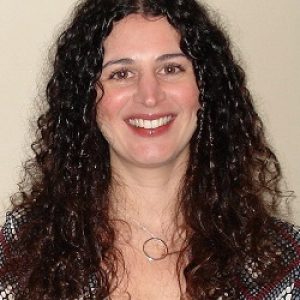
I am a clinical researcher and speech-language pathologist, and I have recently begun my fourth year as the director of the MossRehab Aphasia Center. The Center was founded by Myrna Schwartz and Ruth Fink in 1996 to meet the long-term rehabilitation and social needs of those living with aphasia, an acquired language impairment most typically occurring as the result of a stroke.
The guiding principle of the Center is the Life Participation Approach to Aphasia, a goal of which is to collaborate with people with aphasia and their loved ones to help them meet their unique goals for themselves. Two of our recent projects highlight these collaborations.
Our longitudinal research study, a collaboration with new members of our conversation groups, is directed toward quantifying outcomes of participation in our aphasia activities center across the domains of linguistic impairment, functional communication, and quality of life.
Our newest aphasia center program is the Persons with Aphasia Training Dogs Program. The ‘nuts and bolts’ of the program are that people with aphasia learn positive reinforcement techniques to train dogs, either their own dog or a local shelter dog, in basic obedience skills (for example ‘sit’, ‘stay’).
The goals of the program are to harness what people with aphasia can do, rather than focusing on what is difficult for them, to capitalize on the physical and psychosocial benefits of human-animal interaction, and to combat social isolation by increasing feelings of confidence and self-efficacy through new skill learning.
I look forward to the prospect of continuing to work directly with and for people with aphasia in these, and other, projects to expand the impact of our Center beyond its physical boundaries, by incorporating our programs with the local community and by contributing to the evidence base demonstrating the impact that can be made Aphasia Centers founded on the life participation approach.
Shailesh Kantak, PT, PhD
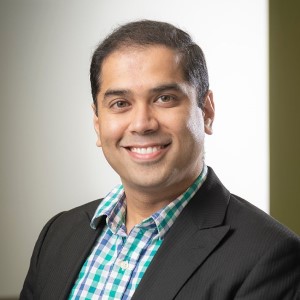
I started my career as a physical therapist and gained clinical expertise in neurologic physical therapy. My clinical experience shaped three important notions:
- Rehabilitation greatly enhances patients’ quality of life
- The brain has an incredible capacity to change with interventions
- Despite rehabilitation efforts, different patients respond differently to interventions.
My research is inspired by my clinical experience and is strongly informed by my PhD in Biokinesiology, and post-doctoral training in neuroplasticity and motor control and learning.
My research in the Neuroplasticity and Motor Behavior Laboratory investigates behavioral and neurophysiologic factors that influence the performance and learning of motor skills in individuals with and without neurologic disorders. The overarching goal is to identify cognitive-motor processes and underlying neural substrates that implement control and learning of motor skills in order to optimize rehabilitation strategies.
One line of research in our laboratory investigates behavioral, neuroanatomic, and neurophysiologic correlates of deficits in the ability to coordinate two hands after stroke. The ability to coordinate two hands is critical for most activities of daily living but often overlooked in rehabilitation research and practice. Through our research, we help identify patients who have significant deficits in bimanual coordination, and we use targeted interventions to remediate those deficits.
The second line of research in our laboratory investigates optimal behavioral and noninvasive brain stimulation interventions that lead to faster and/or better motor recovery of arm function after stroke. Recovery of arm function relies on the ability of the brain to change with practice and repetition, often referred to as neuroplasticity. While modulating neuroplasticity may influence motor recovery globally, we recognize that one size does not fit all in stroke rehabilitation. So our focus is to identify behavioral and neurophysiologic markers of learning to help guide treatment protocols to be more individualized and effective.
Like all fields of healthcare, advances in rehabilitation care are dependent on research. Clinical rehabilitation is often a team sport, reflecting the fact that human function is a complex affair involving the interaction of the body’s physical structure, movement abilities, and cognitive processes.
Accordingly, members of many different disciplines have insights to contribute. The same goes for rehabilitation research: linking simple models of thought and movement to complex functional abilities, like making a meal or navigating the environment, requires the expertise of many kinds of scientists.
We’ve introduced you to just a few of the people involved in this exciting enterprise. We are fortunate at MossRehab and MRRI to have a wide array of skilled clinicians and scientists from many disciplines, and a supportive environment that encourages cross-talk and collaboration.

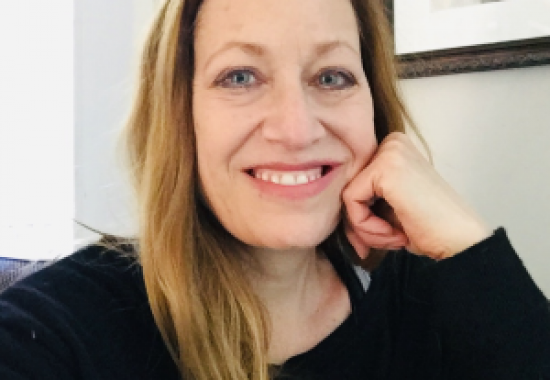
20 comment on “MRRI Celebrates Rehabilitation Awareness Week”